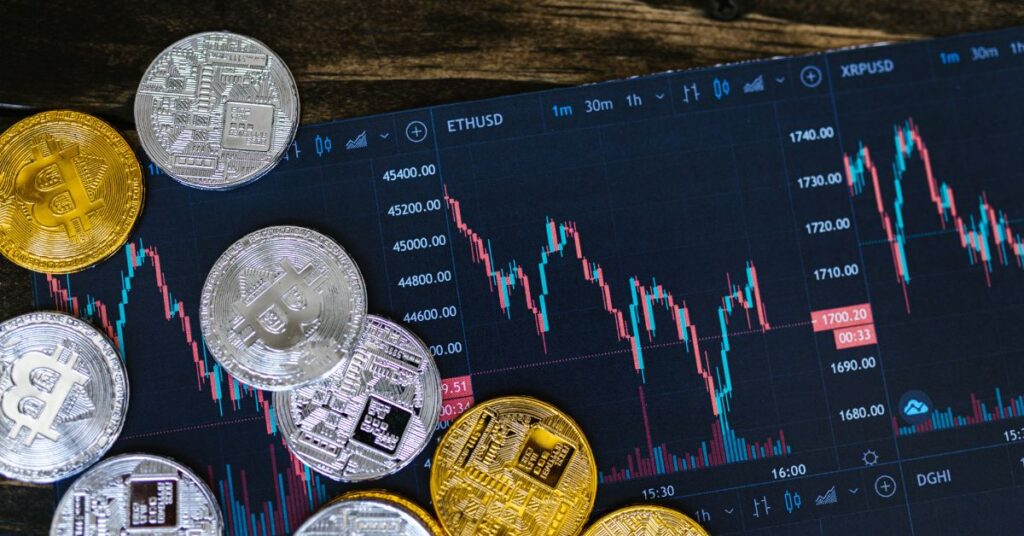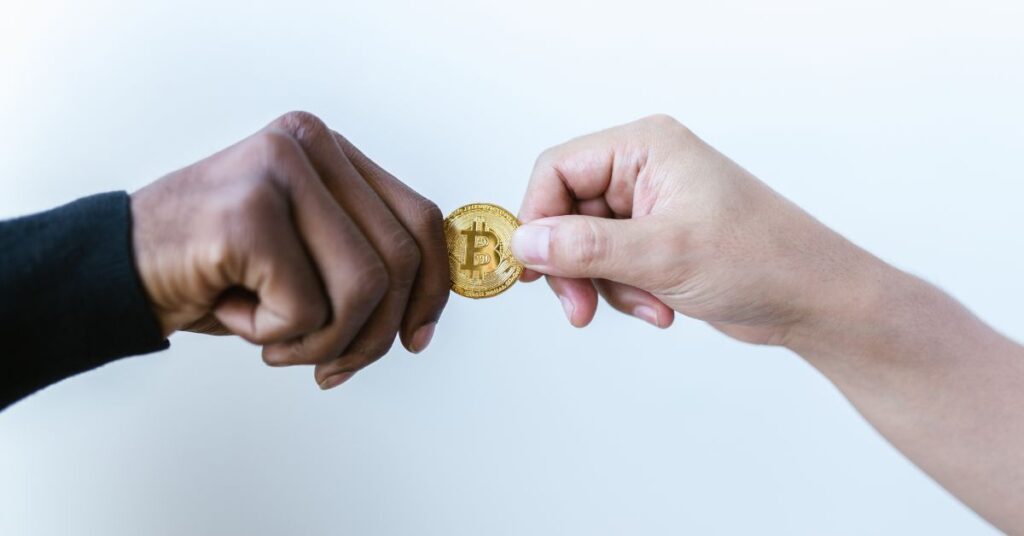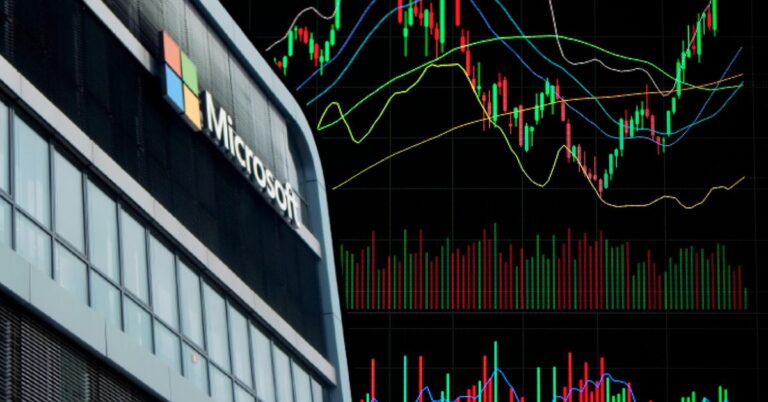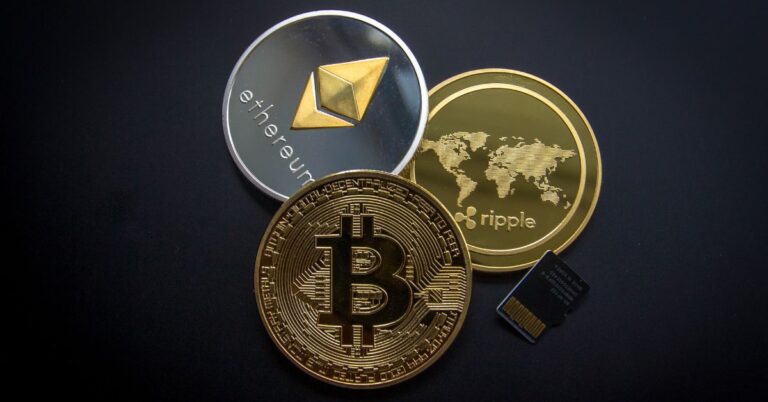So, you’ve probably heard about cryptocurrencies and all the buzz surrounding them, right?
It’s like they’re everywhere these days.
But what exactly are they, and why do people seem so fascinated by them? Well, let’s dive in!
Cryptocurrencies are like digital money, but they’re not your everyday currency.
Unlike the dollars or euros in your wallet, crypto currency exists entirely online and is powered by something called blockchain technology.
This technology is like a super-secure digital ledger that records all transactions.
The best part? Cryptocurrencies are decentralized, meaning they’re not controlled by any government or central authority.
This gives people more control over their money and opens up a world of possibilities for how we use and think about currency.
The story of cryptocurrencies really begins with Bitcoin, the first and most well-known cryptocurrency.
Launched in 2009 by an anonymous person (or group) known as Satoshi Nakamoto, Bitcoin was created in response to the 2008 financial crisis.
It offered a way for people to exchange value without relying on traditional banks.
Since then, Bitcoin has become more than just a digital currency it’s a symbol of the potential for a new financial system.
Bitcoin success didn’t go unnoticed.
It paved the way for thousands of other cryptocurrencies, often referred to as altcoins, each bringing something new to the table in the ever-evolving world of digital finance.
So, whether you’re curious about the history of Bitcoin or interested in what the future holds for the crypto market, the world of cryptocurrencies is definitely worth exploring.
What is Cryptocurrency?

Alright, let’s get down to the basics what exactly is a cryptocurrency?
Think of it as digital cash that exists only online. Unlike the physical money you might have in your wallet, cryptocurrencies are purely digital assets.
But they’re not just any digital assets; they’re secured by cryptography, which makes them incredibly secure and hard to counterfeit.
At its core, a cryptocurrency is a form of digital or virtual currency that uses cryptography for security.
This means that transactions and ownership records are stored in a public ledger called the blockchain.
The blockchain is a decentralized network of computers that work together to verify and record transactions.
Unlike traditional currencies that are controlled by central banks, cryptocurrencies are typically decentralized, meaning no single entity has control over them.
This decentralization offers a level of transparency and security that traditional financial systems can’t match.
How does cryptocurrency work?

So, how does this all work?
Well, when you make a transaction using a cryptocurrency like Bitcoin, it’s recorded on the blockchain.
The blockchain is like a massive, unchangeable spreadsheet that everyone in the network can see.
Once a transaction is verified by the network, it gets added to the blockchain, creating a permanent record.
This process is not only secure but also transparent, as anyone can view the transactions.
In short, cryptocurrencies are a new way to think about money and transactions.
They offer a decentralized, transparent, and secure way to exchange value without the need for a middleman, like a bank.
Popular Cryptocurrencies

Let’s talk about some of the big players in the world of cryptocurrencies.
When people think of crypto, the first name that usually comes to mind is Bitcoin.
It’s the original cryptocurrency, and for a good reason. Here is the list of most popular cryptocurrencies.
Launched in 2009 by an anonymous figure known as Satoshi Nakamoto, Bitcoin introduced the concept of decentralized digital currency to the world.
It’s often referred to as “digital gold” because, like gold, it’s scarce and has to be “mined” (albeit digitally).
Bitcoin is widely used for transactions and as a store of value, and it’s the most valuable cryptocurrency by market capitalization.
Next up is Ethereum, which is more than just a cryptocurrency; it’s a platform for decentralized applications (dApps).
While Bitcoin focuses on digital money, Ethereum allows developers to create and deploy smart contracts self-executing contracts with the terms directly written into code.
This has opened up a world of possibilities, from decentralized finance (DeFi) to non-fungible tokens (NFT).
The native currency of the Ethereum network is called Ether (ETH), and it’s the second-largest cryptocurrency by market cap.
Apart from Bitcoin and Ethereum, there are numerous other notable cryptocurrencies, often called altcoins.
Some popular ones include Ripple (XRP), known for its fast and low-cost international payments, Litecoin (LTC), which offers faster transaction times compared to Bitcoin, and Cardano (ADA), which focuses on sustainability and scalability.
Now, let’s break down the difference between coins and tokens.
Coins are digital currencies that operate on their own blockchain, like Bitcoin or Ethereum.
They function primarily as a medium of exchange, a store of value, or both.
On the other hand, tokens are digital assets created on top of an existing blockchain, usually Ethereum.
They can represent a variety of assets, from ownership in a dApp to access to a specific service.
For instance, many DeFi projects issue tokens to represent ownership or voting rights.
Investing in Cryptocurrencies

So, you’re thinking about investing in cryptocurrencies?
That’s awesome! But before you dive in, let’s go over some basics to help you get started on the right foot.
First things first, how do you actually buy cryptocurrencies?
It’s pretty simple.
You’ll need to sign up for a cryptocurrency exchange, which is like an online marketplace where you can buy, sell, and trade digital currencies.
Some popular exchanges include Coinbase, Binance, and Kraken.
Once you’ve set up your account and verified your identity, you can deposit funds using traditional money (like dollars or euros) and start buying.
You can choose from a wide range of cryptocurrencies, from the big names like Bitcoin and Ethereum to lesser-known altcoins.
Now, if you’re a beginner, there are a few best practices you should keep in mind. First, only invest what you can afford to lose.
The crypto market is notoriously volatile, and prices can swing wildly in a short period.
It’s essential to do your research and not just follow the hype.
Look into the project’s fundamentals, the team behind it, and its use case.
Diversifying your investment is also a good idea.
Instead of putting all your money into one coin, spread it across a few different cryptocurrencies to minimize risk.
Don’t forget to secure your investments.
Use a hardware wallet or other secure methods to store your coins safely.
Now, you’re probably wondering, “What’s the best crypto to buy now?”
The answer isn’t straightforward, as it depends on your investment goals and risk tolerance.
Some popular choices include Bitcoin (BTC) for its stability and widespread acceptance, Ethereum (ETH) for its robust ecosystem and smart contracts, and Cardano (ADA) for its focus on scalability and sustainability.
Other contenders like Solana (SOL) and Polkadot (DOT) have also been making waves due to their innovative technologies.
Differences between trading and investing

When it comes to the crypto market, people often talk about trading and investing like they’re the same thing, but they’re actually quite different.
Understanding the distinction can help you decide which approach suits you best.
Let’s start with investing.
Investing in cryptocurrencies is all about the long game.
It’s like planting a tree and waiting for it to grow over time.
Investors typically buy cryptocurrencies with the belief that their value will increase in the future.
They hold onto their assets for months, years, or even decades, regardless of short-term price fluctuations.
The goal is to build wealth slowly and steadily.
For example, someone who invested in Bitcoin back in 2013 and held onto it would have seen significant returns over the years.
Investing requires patience, a strong belief in the asset’s potential, and a willingness to ride out the ups and downs.
On the other hand, trading is more like surfing the waves of the crypto market.
Traders aim to capitalize on short-term price movements by buying low and selling high, often within days, hours, or even minutes.
Crypto trading can be highly profitable but also comes with increased risk.
It requires a keen understanding of market trends, technical analysis, and sometimes a bit of luck.
Traders need to be constantly monitoring the market and ready to act quickly.
This approach is not for the faint-hearted, as it can be stressful and requires a lot of time and attention.
So, how do you decide between trading and investing?
It depends on your goals and risk tolerance.
If you’re looking for a potentially high-risk, high-reward opportunity and enjoy the thrill of fast-paced decision-making, trading might be for you.
If you prefer a more hands-off approach and are in it for the long haul, investing is likely the better choice.
Some people even combine the two strategies, investing in stable assets while trading more volatile ones.
In short, trading and investing in cryptocurrencies offer different paths to potential profits.
While traders seek to take advantage of short-term market movements, investors focus on long-term growth.
Both approaches have their own risks and rewards, and understanding the differences can help you navigate the crypto market more effectively.
crypto currency Trends and Insights for 2024

Lately, Bitcoin’s been all over the place.
It hit a high of $70,000 but then dropped to under $60,000 in just a week.
A lot of this turmoil is linked to the state of the US economy and what might happen with interest rates.
A recent jobs report showed rising unemployment, which didn’t help Bitcoin’s price.
There’s a lot of chatter about the Federal Reserve potentially cutting interest rates soon, which could make cryptocurrencies more attractive to investors.
Another thing to note is the big outflows from Bitcoin and Ethereum ETF.
Investors pulling out significant amounts of money from these funds has added to the downward pressure on prices.
Bitcoin price is also moving in a pattern that suggests it might consolidate a bit before making any big moves, with support levels around $50,000 to $60,000.
In short, the crypto market is riding a wave of uncertainty.
While some see potential in rate cuts boosting crypto investments, the market high volatility and shifting regulations make it a tricky space to navigate.
If you’re in the crypto game, it’s worth keeping an eye on these developments and staying aware of the risks involved.
The world of cryptocurrencies is vast and diverse.
From Bitcoin as a digital gold standard to Ethereum enabling smart contracts and beyond, each cryptocurrency offers something unique.
Future of Cryptocurrency
Looking ahead, the cryptocurrency scene is shaping up to be pretty exciting, though it comes with its own set of challenges.
Here’s a look at what’s on the horizon for the crypto market:
Trends and Predictions
- Growing Adoption: More and more businesses are jumping on the cryptocurrency bandwagon. We could see cryptocurrencies like Bitcoin and Ethereum becoming more mainstream, with more companies accepting them for payments and integrating them into their financial strategies.
- Regulatory Changes: Governments are still working out how to handle cryptocurrency trading. Expect new regulations that could make the market safer but also bring new hurdles. How these rules play out will be crucial for the future of the best crypto to buy now.
- Tech Innovations: Advances in blockchain technology are on the way. Faster transactions and improved scalability could make using cryptocurrencies easier and more practical for everyday transactions.
Potential Impacts on the Global Economy
- Market Volatility: The crypto market is known for its ups and downs. As cryptocurrencies become more embedded in the global economy, their volatility might affect broader financial markets and investor confidence.
- Financial Inclusion: Crypto has the potential to reach people in areas with limited access to traditional banking. This could open up new economic opportunities and improve financial inclusion on a global scale.
- Regulatory Effects: How governments regulate cryptocurrencies will be a big deal. Stricter regulations might stabilize the market, while overly restrictive rules could stifle innovation and growth.
Conclusion
To wrap things up, the future of cryptocurrency looks pretty exciting.
We’re likely to see more businesses using crypto, new tech making it easier to use, and regulations shaping how it all works.
While the crypto market can be volatile and face some bumps along the way, staying up-to-date and exploring new developments will help you navigate it better.
Keep learning and staying curious there are plenty of opportunities ahead in the world of crypto trading.
Is cryptocurrency a good investment?
Cryptocurrency can be a good investment, but it’s important to understand the risks. Prices can be very volatile, meaning they can go up or down quickly. Some people have made significant profits, but others have lost money. If you’re considering investing, do your research, understand the risks, and only invest money you can afford to lose.
Is crypto real money?
Cryptocurrency isn’t “real money” in the traditional sense, like dollars or euros, but it is a real form of digital asset. It can be used to buy goods and services where it’s accepted or traded for traditional money. However, its acceptance and value can vary, and it’s important to check how and where you can use it.
What is crypto to make money?
Crypto can make money in a few ways. One common method is buying and holding it, hoping the price will go up so you can sell it for a profit. Another way is trading it regularly to take advantage of price changes. Some people also invest in crypto projects or use it in decentralized finance (DeFi) applications to earn interest.
How to invest in cryptocurrency?
To invest in cryptocurrency, start by choosing a reliable cryptocurrency exchange where you can buy and sell digital assets. Set up an account, verify your identity, and deposit funds. Research different cryptocurrencies to decide which ones align with your investment goals. Once you’re ready, purchase the cryptocurrencies you’re interested in and store them in a secure wallet.
How to buy cryptocurrency?
Buying cryptocurrency is straightforward. First, choose a reputable exchange like Coinbase or Binance. Create an account and complete any required identity verification. Deposit funds into your exchange account using a bank transfer, credit card, or another payment method. Then, browse the available cryptocurrencies, select the one you want to buy, and place an order. After purchasing, you can store your crypto in a digital wallet for added security.
What is cryptocurrency mining?
Cryptocurrency mining is the process of validating transactions and adding them to a blockchain ledger. Miners use powerful computers to solve complex mathematical problems, which helps secure the network and verify transactions. In return for their work, miners are rewarded with new cryptocurrency coins. Mining requires significant computing power and energy, and it’s typically done using specialized hardware.
How to make a cryptocurrency?
Creating a cryptocurrency involves several steps. First, decide on the purpose and features of your coin or token. Then, choose a blockchain platform to build on, such as Ethereum or Binance Smart Chain. Develop the necessary code and smart contracts, or use a token creation service if you’re not tech-savvy. Finally, test your cryptocurrency thoroughly and launch it.
How to trade cryptocurrency?
To trade cryptocurrency, follow these steps: First, choose a trading platform or exchange that supports the cryptocurrencies you want to trade. Set up an account and fund it with your chosen payment method. Analyze the market to make informed trading decisions, using tools and charts available on the platform. Execute buy or sell orders based on your strategy. Keep track of your trades and adjust your approach as needed.







